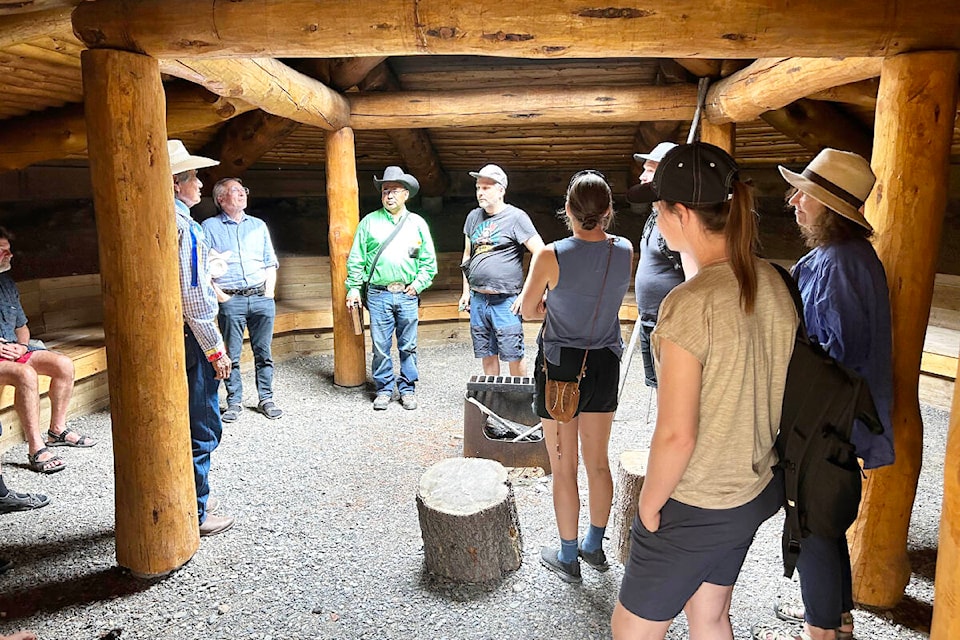A delegation representing traditional reindeer herders in Sweden who are fighting against the development of a large mine in that country, have found common ground, and an ally, in the Tsilhqot’in Nation.
The Tsilhqot’in Nation welcomed the Sámi communities of Duorpun, and Gällivare Skogssameby/Gällivare Sami forest reindeer herding community, as well as members of the Sámi villages of Sirges and Luokta Mavas, the mayor of the Jokkmokk municipality, representatives from Ájtte – the Swedish Mountain and Sámi Museum in Jokkmokk, the former President of the Sámi Parliament in Sweden, professors from the University of Northern British Columbia, and a representative from the Canadian Commission for UNESCO.
The meeting was aimed at supporting Swedish reindeer herding communities and others who are concerned about the threat posed by development of a copper mine in the European country.
“They saw we were up against a large mining company and won,” Nits’il?in (Chief) Joe Alphonse, O.B.C, LL.D. (hon.). Tribal Chair, Tsilhqot’in National Government told Black Press of how the two groups came to meet.
During their visit, the delegation visited Alphonse’s community of Tletinqox west of Williams Lake as well as Nemiah Valley Lodge and Teztan Biny (Fish Lake), which the Tsilhqot’in Nation fought to protect against the development of the New Prosperity mine proposal.
“Our language, our cultural ways, our values and beliefs are all very similar. Our struggles,” said Alphonse.
“It’s like I’m talking to another Chilcotin person.”
Alphonse visited the Sámi in Sweden last year.
During this trip they pledged to continue to further their cooperation, learning and exchange, including developing a letter of understanding to more formally express their relationship, opportunities for future youth exchanges, and the support of the Tsilhqot’in Nation to the Sámi communities of Jåhkågasska, Duorpun and Sirges as they oppose the Gállok Mine proposal.
“They are traditional reindeer herders. That’s really powerful. (Their culture and traditions) must be preserved. They don’t want mining there. They feel like they have absolutely no power in Sweden,” said Alphonse, calling on the Swedish government to revoke the mining permit.
The Sámi shared their culture including duodji and jojk, the impacts from Aitik - Europe’s largest copper mine, their struggles to protect their reindeer herds and lands from the proposed Gállok Mine, and the lessons they have learned from operating a Sámi museum for over three decades.
The exchange furthered the work of the United Nations’ Decade of Indigenous Languages, and a common thread for the week was how Indigenous values are expressed in Tsilhqot’in and Sámi languages and culture, and the lessons that language and culture have for all peoples about sustainability.
READ MORE: Tsilhqot’in National Government calls for halt on mining exploration west of Williams Lake
READ MORE: Premier, ministers meet with Tsilhqot’in National Government on title lands
Do you have a comment about this story? email:
ruth.lloyd@wltribune.com
Like us on Facebook and follow us on Twitter.
